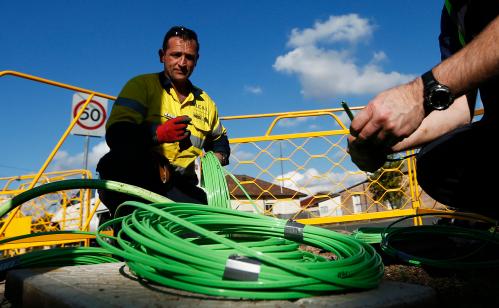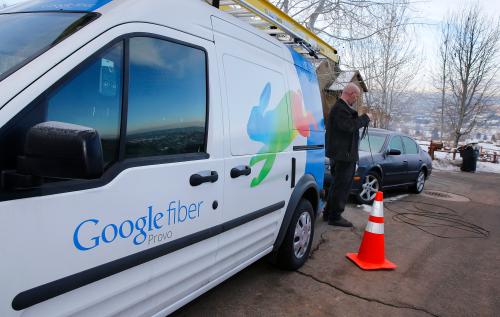In recent years, much of our domestic attention on broadband development has focused on residential service, with the National Broadband Plan goal of having 100 million Americans with 100 megabits per second (Mbps) network capability by the year 2020. This aspiration is supported by our nation’s status as one of five countries that I have termed top-tier Net Vitality global leaders (along with France, Japan, South Korea and the United Kingdom). Their prominence in broadband network metrics, along with achievements in other critical aspects of the broadband ecosystem -applications/content and devices – make them examples worth emulating.
Many thousands of miles away, African countries are working at a more basic, but no less important, level. There, given the lack of technological and financial resources, the most critical near-term push is to make broadband networks available in as large a geographic area as possible. This increasing availability should also help stimulate consumer demand, as individuals acclimate to broadband Internet capability and experience its impact both professionally and personally. In time, market forces should take hold, creating a more attractive environment for investment, competition, and local innovation. However, unless exposure to broadband network capability takes hold, it will be difficult for these countries to realize the benefits that highly-developed countries have enjoyed.
Viewed in a larger global context, it’s important to highlight the smaller steps of lesser-developed countries since they are more likely to be perceived as role models by other countries in the same category.
Kenya is a case in point. The Kenyan Ministry of Information, Communication, and Technology has developed a plan to provide free Wi-Fi through public hotspots in each of its 290 constituencies (districts). The Ministry will be responsible both for the rollout and management of these facilities, which is important to meet a countrywide timeline and to provide a uniform quality of service that will attract consumers.
Additionally, this project has been put on a fast track, with full availability by the year 2017. Each constituency is responsible for allocating targeted funds to cover the cost of Internet access equipment via satellite reception, since there is little or no available fiber or cable infrastructure already in place. The equipment includes lightning arrestors, Wi-Fi mounts, antenna routers, and solar kits in the event of a power blackout. The mandated budgets must also provide for establishing digital classrooms with 40 tablets each so that residents can see the benefits of broadband for students.
For now, the plan only calls for only one hotspot per constituency, which is a modest number. But by setting the bar low, there is a higher likelihood that the rollout will take place on time and within budget. Given the likelihood that satisfaction with the hotspots might create political benefits too, the plan allows for individual members of parliament to lobby the Ministry for up to three additional hotspots per constituency.
Kenya has high hopes that this initiative will be important for businesses that utilize these hotspots, particularly start-ups that otherwise would have limited access to broadband network technologies that are essential for their growth. Job seekers also will be able to apply for positions more efficiently, increasing their likelihood for employment.
In short, Net Vitality can and should be a scalable concept. Some countries, including the United States, may be able to take giant strides over an extended period of time. Others, like Kenya, may take smaller, more rapid steps toward broadband ecosystem development. In a localized context, this may represent nothing short of a significant leap ahead.
The Brookings Institution is committed to quality, independence, and impact.
We are supported by a diverse array of funders. In line with our values and policies, each Brookings publication represents the sole views of its author(s).








Commentary
Why modest broadband development steps mark a significant leap ahead
September 29, 2016